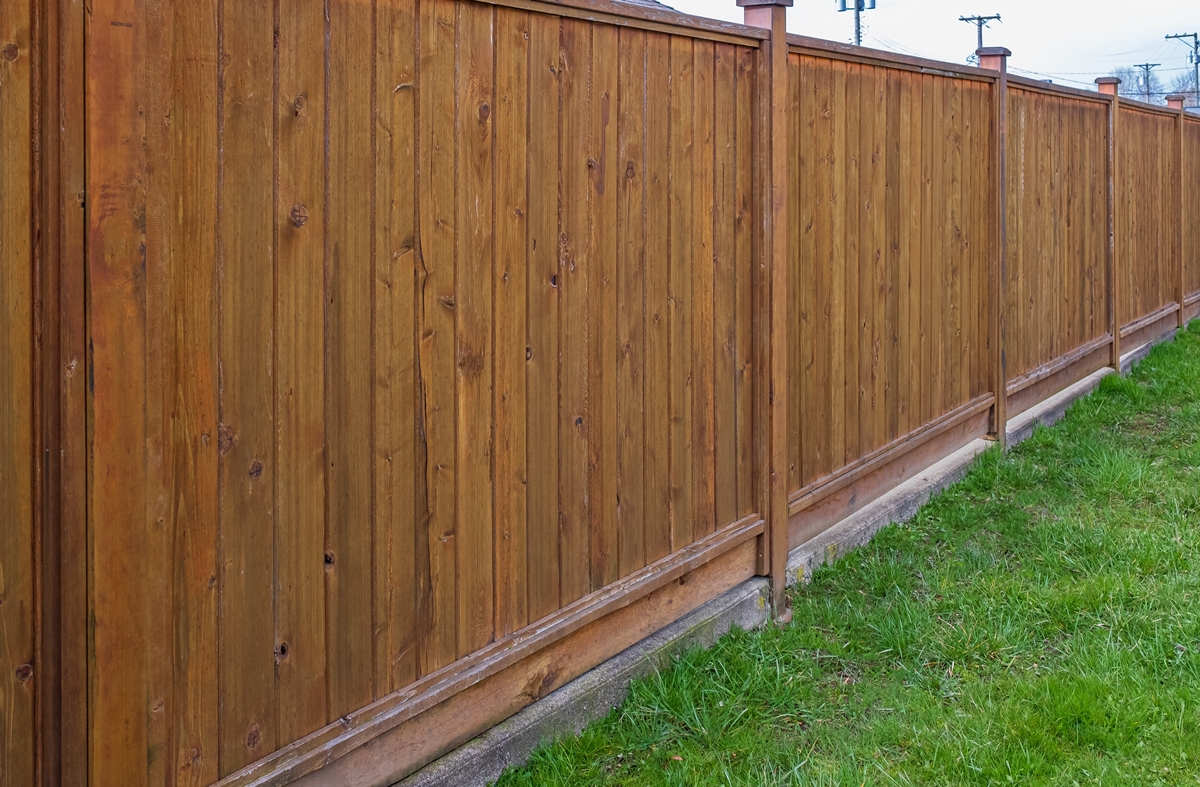If you plan on building a fence, then knowing you have used the correct materials will clearly be important. After all, you want your fence to be sturdy and to not simply decay and rot after a year. Hardwoods such as Ipe, Garapa, Cumaru, and Balau are the best although both Cedar and Douglas Fir work well.
But if you are new to the idea of building your own fence, then you may find yourself in a situation where you are unsure about which wood to use. So, don’t stress because I’m going to help you through it all.
What I will do over the course of the next few minutes is to guide you through the five best kinds of wood for any individual planning on building a horizontal fence.
But why just a horizontal fence? Let me explain.
The answer to this is simple. The pressures placed on a horizontal fence are entirely different from when you add vertical slats to a fence. You are going to increase the chances of putting undue pressure on wood that it just cannot cope with. At that point, mother nature kicks in and will get to work effectively destroying all of your hard work.
So, I don’t want that to happen to you. It’s soul-destroying when your hard work effectively falls apart before your very eyes.
Instead, I want to ensure your fence stays there for years without you having to lift another solitary finger and repair it. Now, I cannot give you a guarantee here, obviously, but I believe that these five different types of wood will manage to make a significant difference to the quality of your fence.
So, let’s get on with checking out the different types and help you begin planning the building of your new fence. But get ready because there are some options that will come as a surprise to you.
Also, I already accept you may not be able to get your hands on every type of wood I’ve mentioned below. However, I’m confident you will be able to locate and purchase at least one of them to complete your fence.
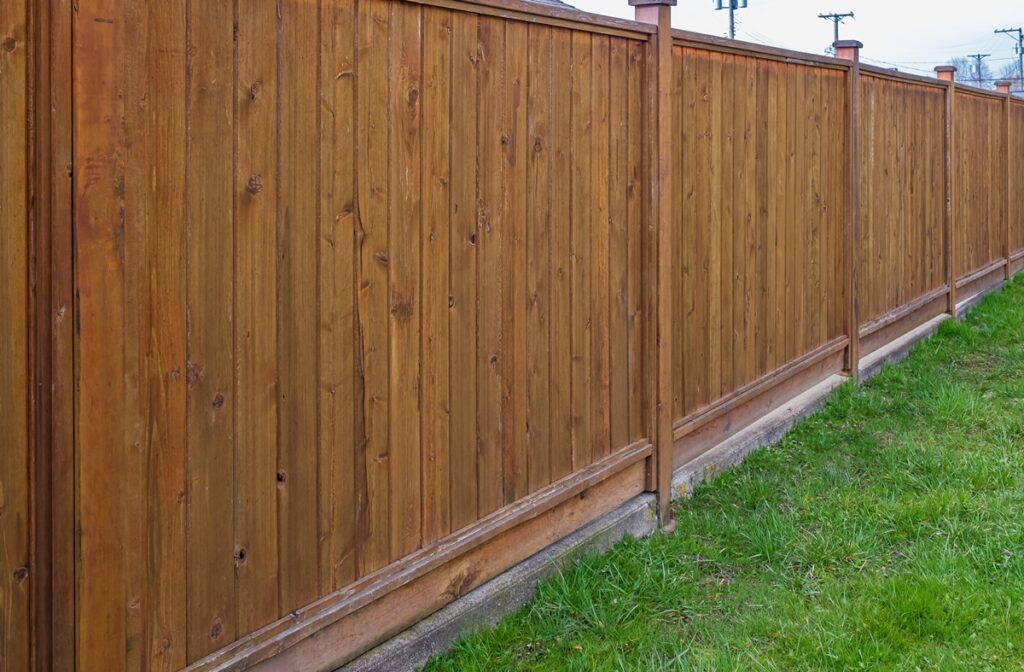
Table of Contents
What is the Best Type of Wood for a Fence?
While you could, in theory at least, use wood such as cedar or fir, they are not the type of wood I would go for. Instead, tropical hardwood is often regarded as being the best for this type of project.
The reason for this is simple. This wood is highly resistant to moisture, doesn’t decay the same, and is also exceptionally sturdy and robust. Those are all different things you really need when it comes to building a fence since it’s usually out there in the elements and with little protection.
But even then, you still have the problem of not knowing which tropical hardwoods will tend to work best of all. Don’t worry though, because I have you covered.
However, let me address something that is often a key concern: Is tropical hardwood your only option, and why is it so good?
Will Only Tropical Hardwood Work?
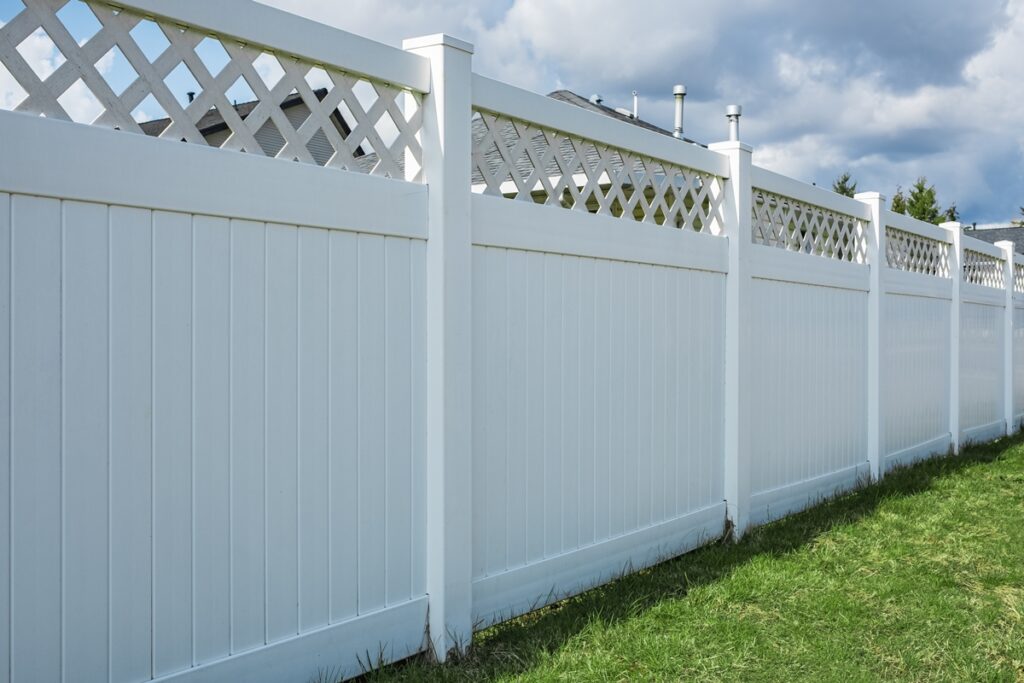
I understand that the idea of seeking out tropical hardwood sounds as if it will be an impossible task, and I accept that it can be challenging. However, I don’t want to put you off the idea of erecting a horizontal style fence, so you should know that tropical hardwood is not your only option.
Instead, you can use more common types of wood, and I’ve included one example below, but your main focus needs to be on how it copes with the outdoors.
You see, some kinds of wood are better at dealing with moisture and the potential for decay better than others. Those are the woods you want to deal with, and also the hardness level of the wood is another important contributing factor.
It’s the hardness of the wood that prevents it from warping and twisting when in use, and who wants a fence that displays those kinds of features?
But I have tended to focus on tropical hardwood because I just feel they do deliver a better finish. Also, I like to give people different things to think about rather than simply opting for redwood. It’s always cool to have something that is different from the norm, as it really creates a talking point.
In addition, the kinds of wood I mention below are just all fantastic at what they do when it comes to being used in this kind of situation. But there is another potential issue, and it’s the possible cost associated with the wood.
Are They Not Always Expensive?
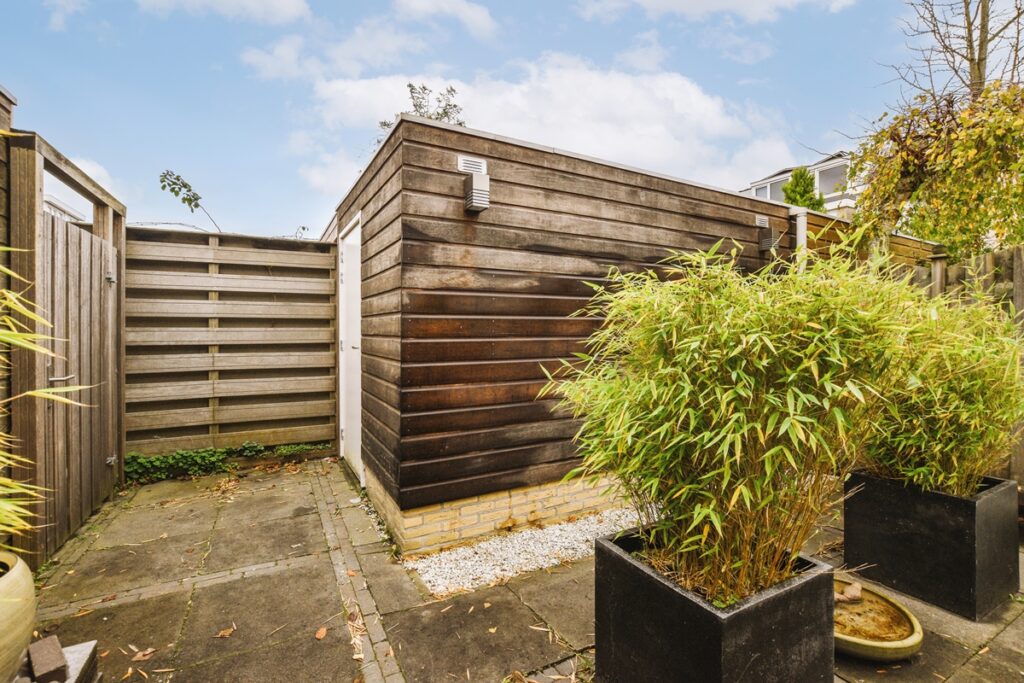
I think people are automatically put off the idea of buying tropical hardwood because they think it will cost a fortune. Now, I admit that this can sometimes be the case, but it doesn’t happen 100% of the time.
But I also want you to think about things from a different perspective that may lead to some mitigating factors regarding the cost.
The kinds of wood I’ve mentioned below are tough. That means one thing: durability.
For something such as a horizontal fence, durability and an ability to withstand the weather is the most crucial aspect. Without that, you face having to constantly repair your fence, or even replace different parts of it.
Over time, that will end up costing you more money, and it’s all thanks to you deciding to try to save money at the outset. At times, it’s just not the wise thing to do, and it ultimately hits you harder in the pocket than you expected.
So, I see certain kinds of wood as almost like an investment, and it’s certainly one that will pay you back.
With that covered, let’s go into the five different woods I recommend when it comes to choosing the correct materials for a horizontal fence.
1. Ipe

The first wood I want to mention may not be the most obvious choice, and that’s because a number of people have not even heard of it, and that’s Ipe.
This wood comes from Central and South America and is an excellent wood for horizontal fencing. The first thing to know is that this wood is highly resistant to decay, and even insects find it tough to get into the core of this wood.
That’s great news from a fencing perspective. There is nothing worse than watching parts of your fence rot and decay before your very eyes, and it’s just not going to happen with this wood.
Also, the grain is very tight, and the wood is dense. That means it remains solid and sturdy even when suspended over a length. It’s not going to warp or twist on you even under pressure, so you can see why it would work well as horizontal slats for a fence.
But also, it looks good. That tight grain makes this a gorgeous wood to look at, and don’t be surprised if your fence starts to draw the attention of others. It looks high-quality, and that’s because it is.
Yet there is a problem with this wood. It’s so tough that cutting it does require time and patience. Also, it’s best if you use a more powerful saw to get through it all. It will just speed up the process.
So, thanks to its toughness, I get that it may not be a type of wood you then intend to use. However, if you can work around the issues regarding cutting it, then I have no doubt that this wood will be capable of withstanding pretty much anything that the weather can throw at it.
Also, it looks pretty amazing when it has been put together as a fence, so if you want something with a bit of warmth and character to it, then this wood will prove to be perfect.
The Pros of Ipe Wood
- It’s sturdy
- It has a natural resistance to humidity and decay
- Insects find it tough to get into the wood
- It has a warmth to it making it a gorgeous wood to look at
2. Garapa
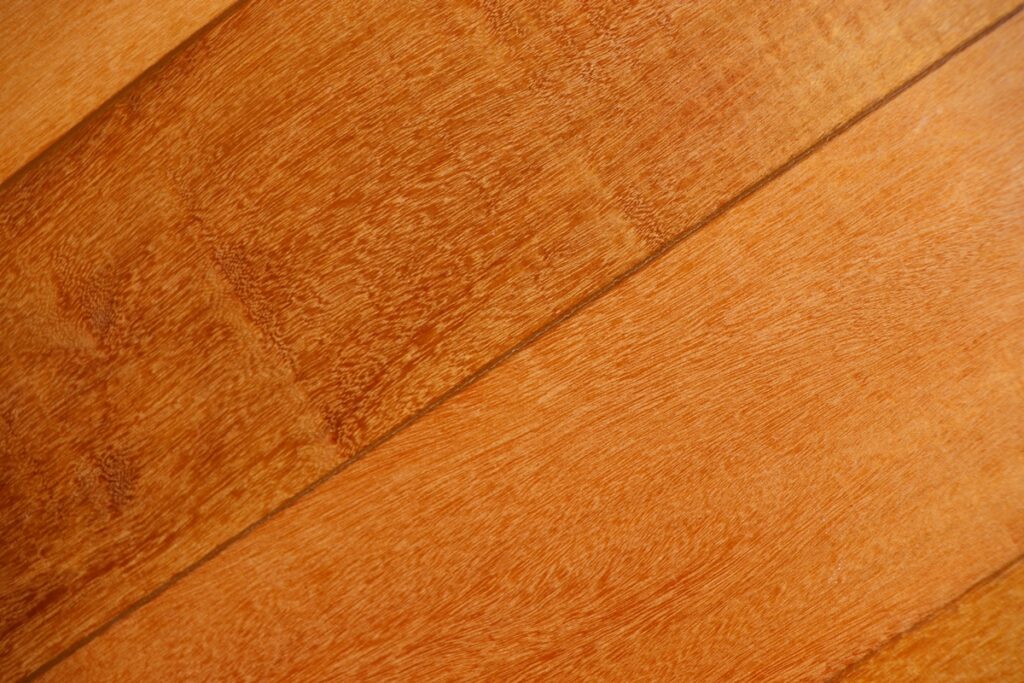
Another option is Garapa, and I love this wood. It should have no problem in coping with any weather condition, from harsh winters in the north of the United States down to the blazing hot sun in Arizona and everything else in between.
It comes with more of a fine to medium grain, but it’s also exceptionally hard and capable of withstanding pretty much anything. Now, I do admit it’s not as hard as Ipe or a couple of other tropical hardwood options, but it is still significantly harder than the likes of redwood or cedar.
I see that as being important when it comes to this situation. The hardness stops it from bending or twisting even after it has been exposed to the elements for some time. I think that’s excellent because it gives you some confidence when it comes to building your fence. Quite simply, you could use Garapa for those slats and go back a couple of decades later, and it should still be looking good. Also, you only require basic tools to complete your fence with this wood.
But as with other tropical hardwood, it’s also naturally resistant to both decay and rot, thanks to a built-in protection with the wood. It is grown in areas with extreme humidity and dampness, so the wood does its best to resist those poor conditions. That is great news for you with your fence.
I also find that Garapa is not quite as tough to cut as other tropical hardwoods. That does mean you feel you can play around with it more and get the type of cut you want without pushing the absolute boundaries of your tools.
Again, I think that Garapa is a wood that is underestimated. However, I accept that’s largely because of people being unaware of it. We tend to look at our stalwarts when it comes to wood, and yet you need to think about the conditions and the ability to withstand those conditions.
The Pros of Garapa Wood
- It’s easier to work with than other tropical hardwood
- It can cope with any weather conditions
- It won’t rot or decay
3. Cumaru
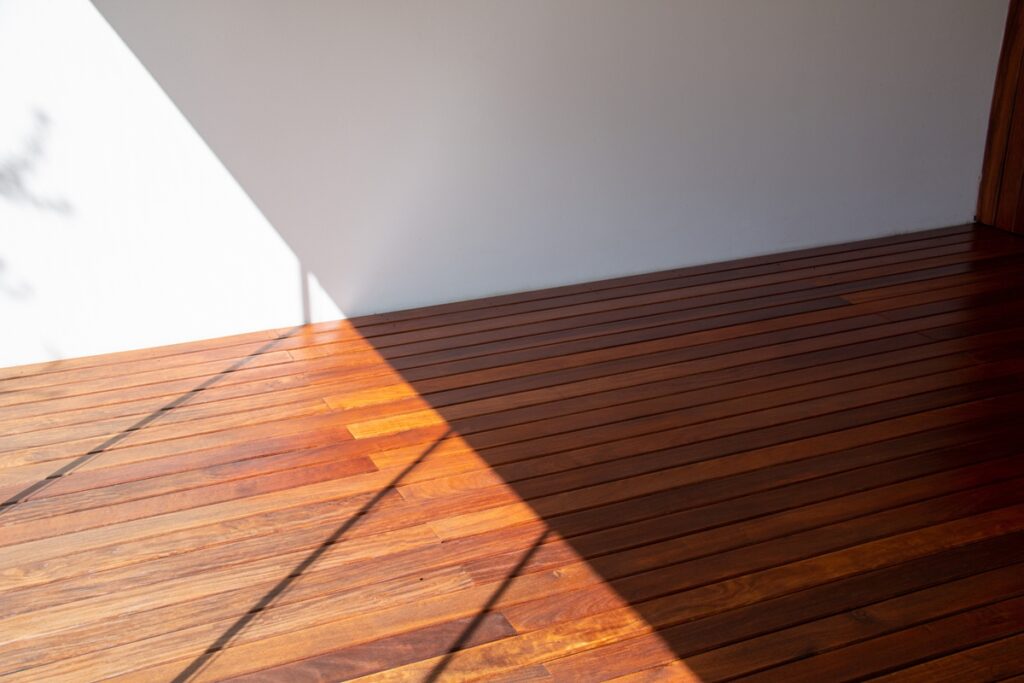
Cumaru is another tropical hardwood that offers a fantastic solution for your horizontal fence. It’s low-maintenance, resistant to rot, and the best part is that it looks absolutely amazing.
I see Cumaru as being something of an elegant looking type of wood. It comes across as extremely high-quality, and the fact it will stay like that for years to come with this wood is just a bonus in my eyes.
But be warned, this wood is hard. Actually, it’s rated as being twice as hard as oak, and everyone knows how solid oak tends to be. That’s something you then need to think about when it comes to your tools and whether or not they are up to the job of not only cutting the wood, but doing a smooth job of it.
Yet this issue of hardness is what you need to look for when it comes to a horizontal fence. It means it can sit there suspended between the vertical posts, and it just will not buckle or bend even when it’s being blasted by the elements.
Ultimately, your fence will continue to look amazing if you do go ahead and use Cumaru as your wood of choice.
And it does have another advantage over some of the other tropical hardwoods I mention here in that it’s not quite as expensive as other options. That’s great if you have a tighter budget, but I admit it’s still going to cost you more than if you were using more common wood that you would find at your local Home Depot.
But I admit that I would be tempted to use Cumaru if I wanted that plush effect and to make something of a statement with a fence. The natural coloring and grain are outstanding, and the fact you can erect your fence and just leave it alone to look stunning is impressive.
The Pros of Cumaru Wood
- It has a real elegance to the finished look
- It has an outstanding natural grain and color
- You can practically leave your fence alone thanks to how resistant the wood is
- It’s relatively easy to work with
4. Balau

This type of wood comes from Malaysia, and I admit you may find it tough to get your hands on some in different parts of the country. However, if you are able to source it, then it does end up being a fantastic choice.
Known for its durability, the wood comes with a fine to medium grain, and it does have a toughness about it, which makes it an excellent choice for horizontal fences. People also love this wood because it does have something of an even texture to it, so your fence looks relatively uniform from a visual perspective.
It does also have a certain level of resistance to rot, but I admit it’s not as good at this as other options.
For me, it’s the appearance of this wood that makes it such a good choice. Also, I accept that it does come across as easier to cut, but it has the hardness to it that you want when erecting a fence in this way.
But as I said, the biggest issue is perhaps getting some in the first place. Yet, with the outcome, it could well be worth going that extra mile and seeking to get your hands on some.
The Pros of Balau Wood
- It has some resistance to rot, but not as good as other tropical hardwoods
- It’s appearance is outstanding
- It’s easier to cut than other tropical hardwoods
- It’s highly durable
5. Cedar
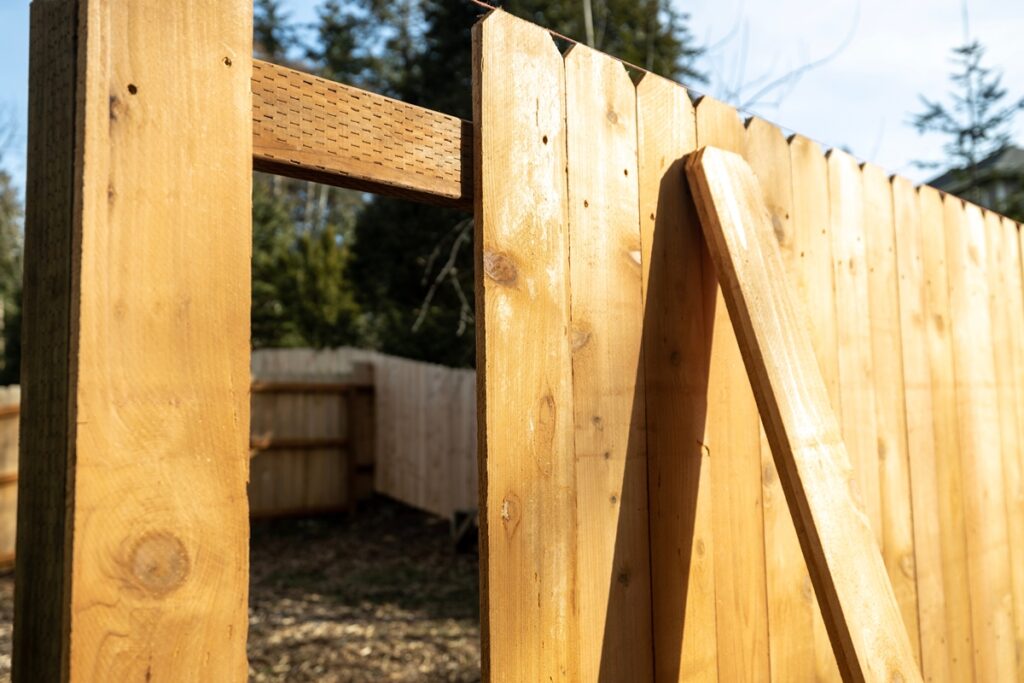
Now, I know that cedar is not a tropical hardwood, but I wanted to provide you with a different option when it comes to getting wood for your fence.
I admit cedar is not as strong or as water and rot resistant as the other options above, but that’s not to say it’s a wrong choice. So, it does require a bit more work with the caring for the wood, but you should still be able to get around 15 years of use before you start to see your wooden slats looking as if they need some work done to them.
Cedar is very easy to locate, and it’s also the least expensive of the options I’ve listed here. For that reason, it’s ideal for people who wish to build a horizontal fence but want to do so on a budget.
The grain and color of cedar are amazing, and my advice is to go ahead and use smaller sections and to provide shorter gaps for the pieces of wood to cover without any sort of support. I feel that’s key, and it should result in a sturdy fence that is capable of withstanding quite a lot of punishment.
But do keep in mind that you do need to pay closer attention to the fence and check on it more regularly. As long as you do that, it does mean your fence should continue to look pristine for years to come.
The Pros of Cedar Wood
- It’s easy to get your hands on cedar wood
- It’s less expensive than tropical hardwood
- It’s still quite resistant to decay, but requires a bit more work
- The grain and color are outstanding with cedar wood
Any other Kind of Wood Worthy of a Mention?

So, I know I’ve probably thrown a few curve balls at you with the kinds of wood I’ve included in my list. As a result, are there any other more common species of wood that I think would still be capable of working when it comes to a horizontal fence?
The answer is yes. However, I would still go for one of the species I’ve mentioned above, if your budget allows for it.
I can see why people would be drawn to more common species of wood such as redwood and Douglas fir for a fence. They are certainly more inexpensive compared to other options, and they will undoubtedly cope with the weather. However, they are just not quite as effective as other options out there.
Both redwood and Douglas fir will require more maintenance. You will need to coat them more often in order to preserve them and to stop the wood from rotting. I know they do have some sense of anti-decay properties, but that’s on a vastly inferior level to the species of wood I’ve mentioned above.
However, if you prefer to go for wood you already know about, and have experience of working with, then those are two options I would feel content with using.
How to Care For Your Horizontal Fence

So the five different kinds of woods I’ve listed above are all fantastic at doing their bit to counteract rot and decay. However, don’t think for a second you need to simply erect your fence and then leave it for years. Instead, I highly recommend taking steps to care for your fence, as this will simply increase the potential lifespan of the item.
My main focus here is not on trying to change the look of the fence but on enhancing it. That’s because often, the grain of the wood you use will be one of the best parts, and it will certainly add to the overall appeal of the fence.
Because of that, I would always recommend you apply a clear varnish or resin over the top of the wood. All you are trying to do is to ramp up the resistance that naturally comes with the kinds of wood I’ve mentioned above, and there’s no doubt that a protective coat of resin is the best way to do that.
I say to keep it clear because it has the impact of really bringing the grain to life. However, if you are unsure of the color of the wood in its natural state, then you can always use a resin with a slight hint of color.
In doing this, you will change the end appearance, but then you probably have a clear idea of what you want to achieve with your fence.
Of course, you could also paint it with special outdoor paint. However, when you are using wood that is just as gorgeous to look at as the kinds I’ve listed above, then why would you want to do that?
Overall Conclusion
And that’s my list of the best woods for you to use when building a horizontal fence at your home. Each wood listed above is strong, resilient, and has the ability to withstand pretty much anything mother nature can throw at it.
Also, don’t forget that it also leads to a fantastic looking fence thanks to the grain of the wood. Let’s face it, I don’t want you to only choose a wood that’s strong but ultimately looks horrible once the fence is complete.
But before you go ahead and start with building your fence, you may want to check out these posts to ensure you have the correct tools in place.
- Best circular saw
- Best miter saw
- Best table saw
